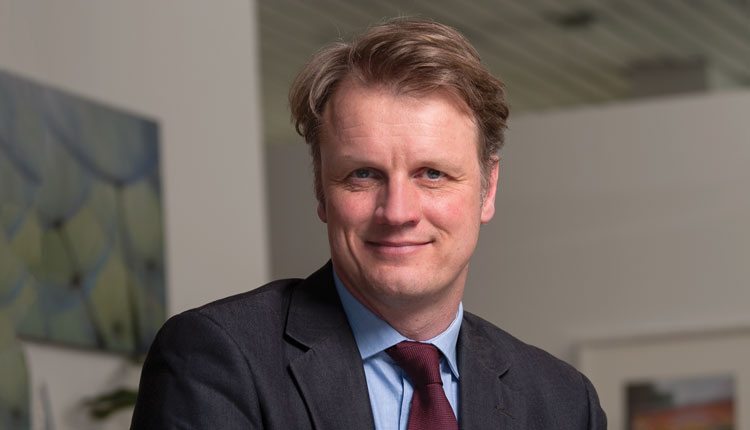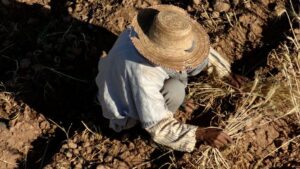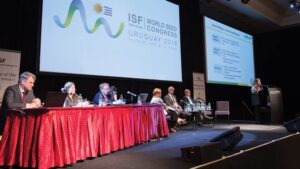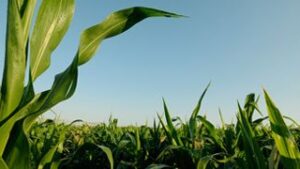With a defined mission and work plans in play, the International Seed Federation is set to start making big moves.
The past year has been one of action for the International Seed Federation. Having clearly defined its mission “to create the best environment for the global movement of seed, and promote plant breeding and innovation in seed,” the sections, committees and working groups have direction, shares Michael Keller, ISF secretary general.
At the recommendation of the ISF 2020 Working Group, the board of directors adopted five priorities: innovation, movement of seed, intellectual property rights, biodiversity and engagement.
“We are taking a proactive approach and looking to establish our position in these key areas so we can engage in conversations outside of ISF at the global level,” Keller says. “We’ve started this process by developing action plans, and all our work must align with the bigger objective. Most recently, we’ve been working to quantify our goals. It’s important to make these strategic objectives as concrete as possible.”
A central theme of our strategic objectives is consistency – of regulations governing seed applied technologies, of frameworks for phytosanitary measures, and of policies for products developed through the latest plant breeding methods.
Our Plant Breeding Innovation Working Group, which reports to the Breeders Committee, is focused on achieving a consistent approach to the scope of regulatory oversight for products of plant breeding innovation. As part of our strategy we are engaging with a broader range of stakeholders, and leading a coordinated approach by national associations in cooperation with regional associations to drive progress with their countries’ governments.
To best support the work that needs to be done around the five priorities, Keller evaluated the association’s internal structure and added staff to help drive these strategic objectives. “I believe we are ready to engage the right groups with the right topics at the right time,” he says.
As such, the ISF committees have been preparing discussion and position statements. “If we can formally agree all together on a topic, then the secretariat can drive them in a more dynamic way,” Keller says. “We will not have to wait for the general assembly to move forward, which allows us to step into a global discussion at any time.”
ISF is leading outreach with the Food and Agriculture Organization of the United Nations, the International Union for the Protection of New Varieties of Plants, the Organisation for Economic Co-operation and Development and the International Plant Protection Convention (IPPC).
“All these multilateral organizations have discussions around topics of importance to the seed industry,” he says. “We need to be a part of them.
“I’m pleased to see the progress that’s been completed to date and excited for the 2016 World Seed Congress. Of course, there’s still a lot more work to do. I encourage all delegates to participate in our committee, section and working group meetings; get to know our leaders. It’s important that our members drive the discussion.”
— Michael Keller
Field Crops Section
Chair: Bryan Gerard, JoMar Seeds
This group is rich in members and covers a variety of crops, says Piero Sismondo, ISF director of seed technology and trade. This past year, the Field Crops Section has focused on completing a study on breeders’ remuneration with soybeans. The study is a continuation of the previous one on wheat, Sismondo says, noting that it analyzes how 12 countries manage farm-saved seed, royalty collection and remuneration. “Our goal is to identify efficient methods developed in some countries that may be proposed for adoption or application elsewhere,” he says. The study will be presented at the 2016 congress, and a general discussion will follow.
In addition to the study, the section evaluated field crops, and has compiled a statistical report.
One new project that section members are working on is preparing a list of regulated pests for maize. “We are only at the beginning of the process,” Sismondo says, noting that this extends the regulated pest list to field crops.
Forage and Turf Section
Chair: Darrell Dziver, BrettYoung
The Forage and Turf Section has completed a survey of nearly 30 countries. Sismondo says the intent is to create global awareness of the research and innovation in forage grass development and imporvements in forage quality. In recognizing a lack of information available to help farmers understand forage options and varietal differences, the section discussed preparing a paper on quality of forage. It will account for multiple types of farming operations, such as the different needs of feeding cows versus that of grazing sheep.
The section is also discussing what can be done to add to the dialogue about natural grass versus artificial on sports fields, especially in football and European soccer.
Vegetable and Ornamental Section
Chair: Vincente Navarro, Nunhems
The Vegetable and Ornamental Section has four working groups focused on disease resistance, GM vegetables, vegetable seed production and market access. Vegetable seed production is a global activity, explains Szabolcs Ruthner, ISF regulatory affairs executive.
The Disease Resistance Working Group has been working on a coding system for pathogens, and in order to identify and distinguish different isolates, recommends the use of differential hosts.
The Market Access Network will launch during the Vegetable and Ornamental Crop Section open meeting at the congress. Market access issues have always been part of ISF’s core business, but they are becoming increasingly common. This new concept aims to deal with market access problems more efficiently by better coordinating existing efforts and resources.
Formed just after the 2015 World Seed Congress, the Vegetable Seed Production Working Group will meet immediately after the World Seed Congress. Top priorities include intellectual property; child labor and labor conditions; phytosanitary issues at the seed production level; and pollinators. In partnership with the Asia Pacific Seed Association, Ruthner says the group is developing best management practices for vegetable seed producers to maintain and avoid infringement of intellectual property.
Phytosanitary Committee
Chair: Roeland Kapsenberg, DLF
Because seeds may present a risk when they are introduced to environments where associated pests could establish and spread, many countries have phytosanitary restrictions for the movement of seed. The activities of the Phytosanitary Committee fall into three areas: representing the industry at the IPPC, supporting ISF’s members on regulatory issues and developing technical tools to facilitate the international movement of seed.
“ISF has been instrumental in the IPPC’s decision to develop a standard on the international movement of seed,” says Radha Ranganathan, ISF director of technical affairs. “The standard is intended to provide guidance to national plant protection organisations (NPPOs) on identifying, assessing and managing pest risk associated with the international movement of seed.” Standard setting is a slow process, but she is hopeful that the standard on seed will be adopted by IPPC member countries in a year or two.
Phytosanitary measures imposed by countries must be technically justified and this is where ISF’s Regulated Pest List Initiative comes in. The objective of the initiative is to develop a database with a science-based summary of pertinent information to serve as a resource for the industry as well as regulatory bodies.
“The answer to the question ‘is seed a pathway’ determines if the phytosanitary measure is technically justified,” Ranganathan says. Based on a review of the scientific literature as well as industry research, knowledge and experience, the database shows that around 75 percent of the pests regulated for eight seed species studied are not a pest risk. Seed is not a pathway for the introduction or spread of these pests.
The committee hopes the regulated pest lists will be a useful tool for countries to review their lists of quarantine pests for seeds. That coupled with the seed standard will facilitate the international movement of seed.
Intellectual Property Sub-Committee, Breeders Committee
Chair: Usha Zehr, Maharashtra Hybrid Seeds
“This committee is charged with identifying intellectual property tools that would be helpful to the seed industry,” says Hélène Guillot, ISF international agriculture manager. The group is brainstorming about the needs around IP for the future. “This is an area where things are moving fast around the world,” she says. At the World Seed Congress, a presentation will be given that focuses on royalty collection and how it is important for IP. Guillot says the committee hopes to demonstrate that increased revenue leads to more innovation and new varieties to address tomorrow’s needs.
Sustainable Agriculture Sub-Committee, Breeders Committee
Chair: Usha Zehr, Maharashtra Hybrid Seeds
One area of focus for the Sustainable Agriculture Sub-Committee is the access and benefit sharing of genetic resources through the Convention on Biological Diversity’s Nagoya Protocol and the International Treaty of the FAO. ISF is working on the development of a user-friendly decision tree to provide the right information to its members regarding their access to genetic resources. The easiest way for breeders to access material is under the scope of the International Treaty (included in the multilateral system), as a Standard Material Transfer Agreement is provided. However, the long-term functioning of the International Treaty is endangered as it hasn’t received as much financial support as expected. An ad-hoc working group was put in place three years ago to enhance the functioning of the multilateral system.
At its annual meeting in July, the working group will host its last meeting and give a recommendation to the International Treaty secretariat. The role of ISF, Guillot says, is to represent what our members want, find a common position and help propose new ideas. “As a whole, the industry is confident in the certainty the International Treaty delivers, and does not want to rely solely on the Nagoya Protocol,” Guillot says. “Efforts should be made to get countries to ratify the treaty and place genetic resources in the multilateral system. Losing the treaty would be detrimental for the breeding industry.”
As part of the open session of the Breeders Committee, there will be a roundtable discussion about what the seed industry can expect from the International Treaty Working Group.
Seed Applied Technologies Committee
Chair: Klaus Schlünder, KWS
This committee has been developing a communications strategy. “We have outlined goals and identified stakeholders,” Sismondo says. “Through these efforts, we’ll have uniform language to use across the industry. This will help to avoid unintentionally sending mixed messages when working with stakeholders.” The communications plan will be presented at the congress. Additionally, the committee has prepared guidelines, which will be distributed to ISF members to adapt and translate into local languages.
Trade and Arbitration Rules Committee
Chair: Hamdi Ciftciler, MAY Seed
“Our work has focused on revising the English language of the ISF Rules and Usages for Trade in Seeds for Sowing Purposes,” Sismondo says. “This will increase clarity and understanding by users. We also improved the language in a few articles; these too are now more clear.” Sismondo explains that it’s important for members to have a good understanding of ISF’s rules to create good contracts and avoid mistakes and possible disputes. During the congress, an international arbitrator will discuss the merit of arbitration, the value of ISF’s Procedural Rules for arbitration and what that means for member companies.














